Brown mushrooms are an incredibly diverse family of fungi that can be found in many different climates and habitats across the world. These mushrooms vary greatly depending on the subspecies.
They also come in various shapes, sizes, color, texture, smell, and taste. How many brown fungi can you name?
Common brown mushrooms include honeys, king boletes, brown webcaps and hen of the woods. Some are edible while others are not recommended.
Below we’ll discuss this type of fungi and how you can identify them when foraging.
Brown Mushrooms
Be cautious when identifying and consuming wild mushrooms. If you are unsure whether a mushroom is safe to eat, it is best to err on the side of caution and not consume it.
1. Honey Mushrooms
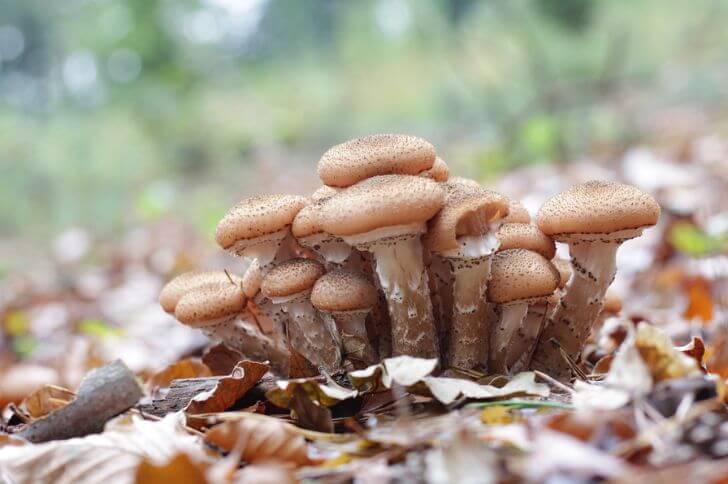
Honey mushrooms can be a delicious and easily obtained wild mushroom. They are often found in wooded areas or near the base of trees during the late summer and early fall months. Identifying honey mushrooms is important for anyone who wants to find, collect, and eat these types of mushrooms.
Identification:
There are two common types of honey mushrooms:
Ringless honey mushrooms: These grow in large numbers on stumps or around tree bases. They grow in clusters. Each fungus is about 1-4 inches wide on the cap with a 2-8 inch long stalk.
The cap is dry and brown while the stalk is yellowish-brown without the ring common in the Armillaria mellea.
Honey fungus: These types of honey mushrooms also occur in clusters. They are larger compared to the ringless, growing to 6 inches in diameter. Young species have a yellowish cap and whitish stalk while older species are reddish-brown with yellow-brown stalks.
Each mushroom has a white ring on the stem close to the cap.
Uses:
Honeys are edible. We recommend you harvest caps of young fungi. Honeys are best stewed, roasted, or braised. Cook for at least 40 minutes. Note: when honeys are cooked, they are slightly slimy.
2. Cremini
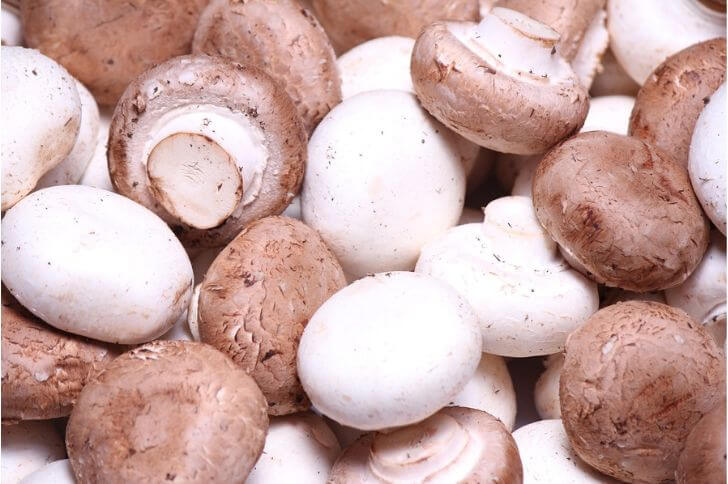
Did you know cremini or crimini are also called button mushrooms? Because of the color difference, most people presume they are two different varieties. But, we can tell you with certainty, they are the same species at different stages of growth. So next time you are grocery shopping, pick the brown-looking mushrooms.
Identification:
Agaricus bisporus fungi have three stages of growth that give them their name; button, cremini or portobello.
Cremini is the name given to agaricus bisporus before the mushrooms mature. At this stage, the fungi have brownish caps and a whitish stem. When sliced, their flesh should be white.
Uses:
Can you forage for cremini? If you are a new mushroomer, we recommend you get some training on identifying them due to their similarity to other inedible fungi. Store bought cremini can be grilled, used in pizzas, or in making sandwiches and tacos.
3. King Bolete
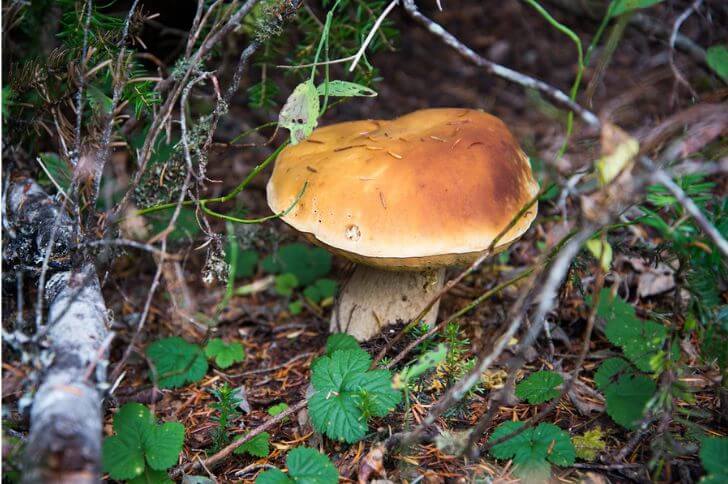
From North America to Spain to China, the king bolete is an edible fungus that offers unequaled flavor. If you come across this King, you are in for a treat.
Identification:
There are some key indicators you should look for when trying to identify this particular type of mushroom.
The top or pileus of the king bolete mushroom is reddish-brown in coloration with yellowish pores underneath it rather than gills like other types of mushrooms. It is also characterized by its thick club-shaped stem which is usually whitish in color with a faint netted pattern on its surface. The other telltale feature of the boletus edulis is its flesh. It should be solid white.
Uses:
They typically grow under oaks and hemlocks. It’s worth noting, these brown mushrooms are extremely rare. When you come across a patch, take them all before another forager stumbles on them.
Also, king boletes are buggy. Ensure to check for fungus gnats. You can microwave, sautee, or fry this fungus. You’ll love their nutty taste.
4. True Morels
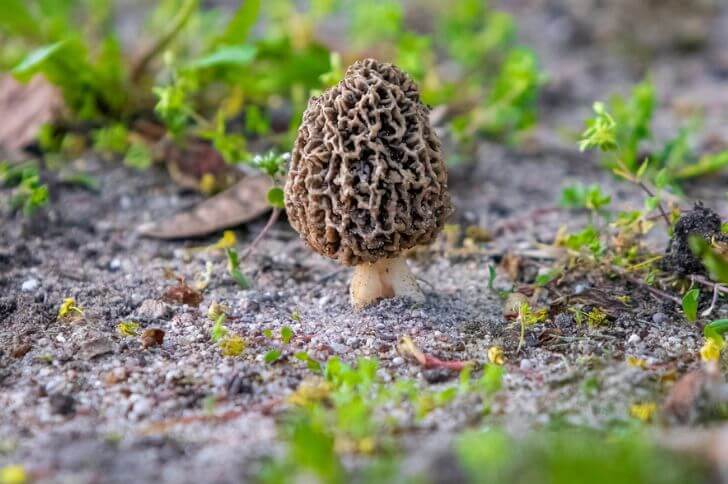
If you want to forage for a mushroom that tastes amazing when sauteed, we recommend true morels. Also called yellow morels or common morels, they have unique fruiting bodies that make identification easy.
Identification:
They have a distinctive appearance and aroma that make them beloved by mushroom hunters everywhere.
True morels typically have a spongy, honeycomb cap with ridges and pits on their surface. The caps can range from yellow-tan to brownish cream . Note the pits are darker than the edges.
True morels also have short hollow stalks when cut open that have a whitish exterior. They don’t have a telltale smell.
Uses:
Like porcini, true morels have many uses. You can use them in pizza, sautee, fry in butter and garlic, and more. Also note that true morels can be dried for later use.
5. King Oyster
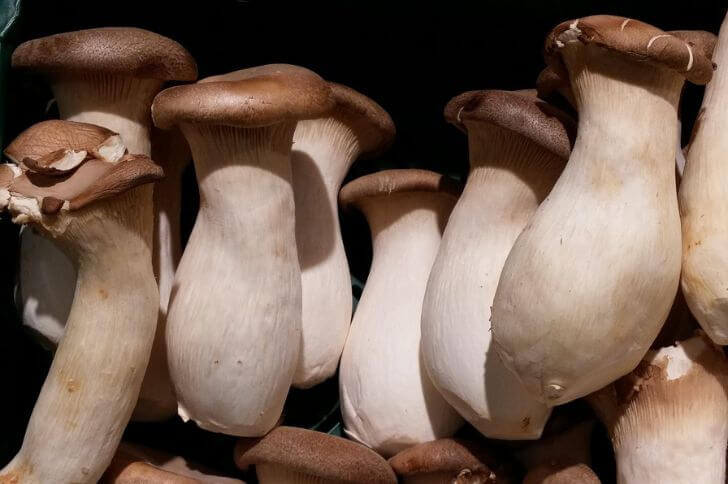
King oyster mushrooms, also known as Pleurotus eryngii or king trumpet mushroom, are an edible brown mushroom prized for their meaty texture and earthy flavor with a hint of seafood.
Identification:
While they may look intimidating with their large size and white coloration, these mushrooms have become increasingly popular in both home kitchens and restaurant menus alike.
The first step to identifying king oyster mushrooms is to take note of the shape and size. These mushrooms typically measure 4-10 inches long, with a thick stem underneath a thin cap. The caps can range from light brown or grayish hues to darker shades of tan or grey, depending on the species type.
Uses:
King oysters are grown in Europe and North Africa. They are also cultivated in parts of Asia. In North America, you can get growing kits that are inoculated. You can use these brown fungi to prepare mushroom scallops or roasted.
6. Fairy Ring Mushroom
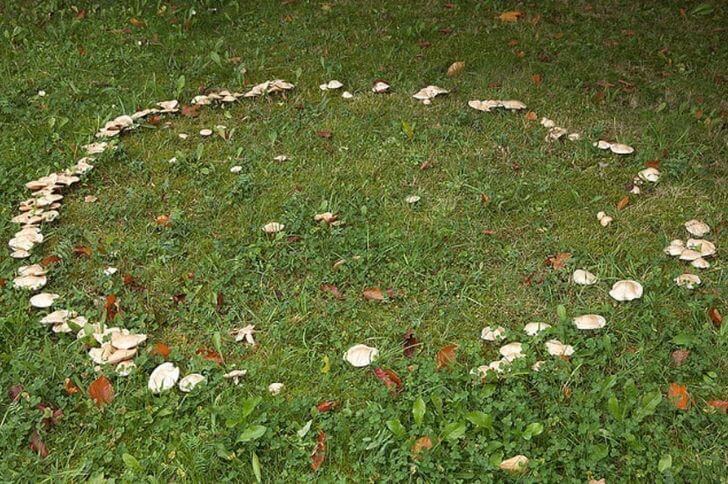
source:monique_empath
Found in lawns, pastures and grassy areas across the world, fairy ring mushrooms are one of the most unique brown fungi because of their resurrection ability. During hot weather, they shrivel and look dry/dead but after a good rain, they inflate and resurrect.
Identification:
Knowing how to identify these mushrooms is essential for anyone looking to forage them for consumption.
The most common characteristic of fairy rings is their circular patterns on the grass or soil surface where the mushroom grows. These circles can be anywhere from 2 to 40 feet in diameter and are often surrounded by lush green grass.
The brown cap of the mushroom has whitish gills underneath it. They turn creamish with age. Its stem is smooth and buff.
Uses:
Fairy rings are best suited for stews and soups. We recommend you use the caps only. Stalks can be a bit tough. What do fairy rings taste like? They have a sweet taste. If you pick a few pounds, dry some for future use.
7. Brown beech brown mushroom
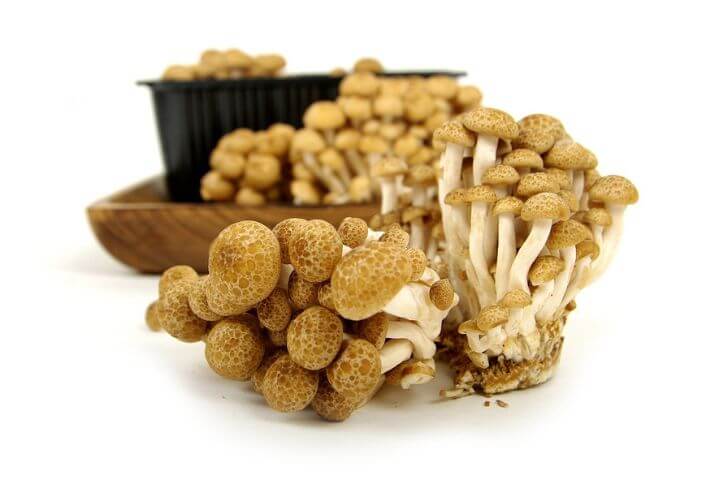
In our list of tall mushrooms, we looked at the stalk of the beech mushroom. In this list, its cap fits in this list perfectly.
Identification:
Also known as shimeji or brown clamshell, brown beech mushrooms are readily recognizable due to their brownish grey or tan cap and white stalk.
The caps of these mushrooms typically have a convex shape with incurved edges; they range in size from one inch to two inches across.
In addition to this unique appearance, these mushrooms are easily identifiable by the way they grow – on tree trunks and stumps in clusters or singularly – particularly near beech trees (hence their name!).
Uses:
Are brown beech mushrooms edible? Yes, you can use them for mushrooms salads, dips, omelets, stir fries and more.
8. Hen of the woods
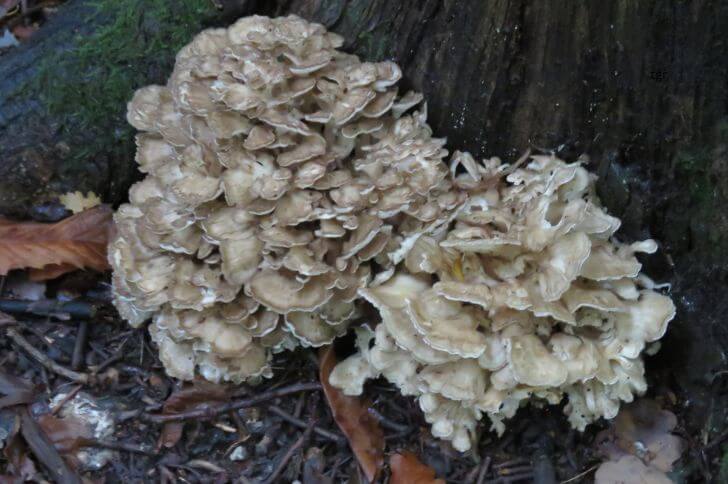
Hen-of-the-woods mushrooms, also known as Maitake or Grifola frondosa, are edible brown mushrooms that favor mature forests. They often pop up in the same place every year.
Identification:
These mushrooms have a distinct look – they typically appear in clumps of overlapping fan-shaped or spoon-shaped caps at the base of trees.
The caps range from grey to brown in color, with a semi-firm texture. They don’t have stems and their pores are white-yellowish.
Uses:
These mushrooms are highly sought after by mushroomers due to their unique flavor profile and culinary versatility. They can be used in a variety of dishes – from soups to salads – and lend themselves well to being sautéed, grilled or even roasted.
9. Brown Field Mushroom
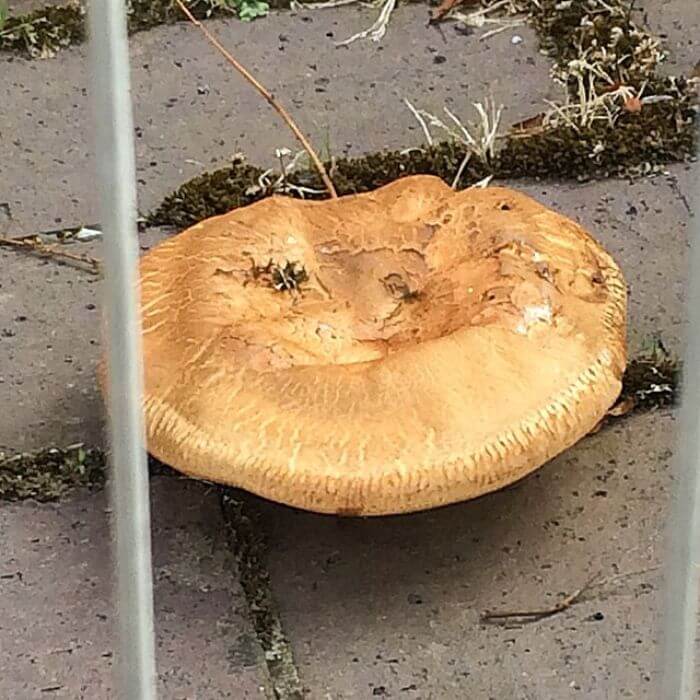
source:renton0
Brown field mushrooms are an edible fungus found in grassy places in Europe as well as North America.
Identification:
These large, brown mushrooms can be identified by their round caps ranging 1.3-3.9 inches. Tops are brownish-red. Underneath, the deep pink crowded gills produce a chocolate brown spore print. Their stalks are white and smooth.
Uses:
Like the field mushroom, the brown field mushroom is edible and has a similar taste. However, its texture is not as firm.
10. Umber-brown Puffball mushrooms
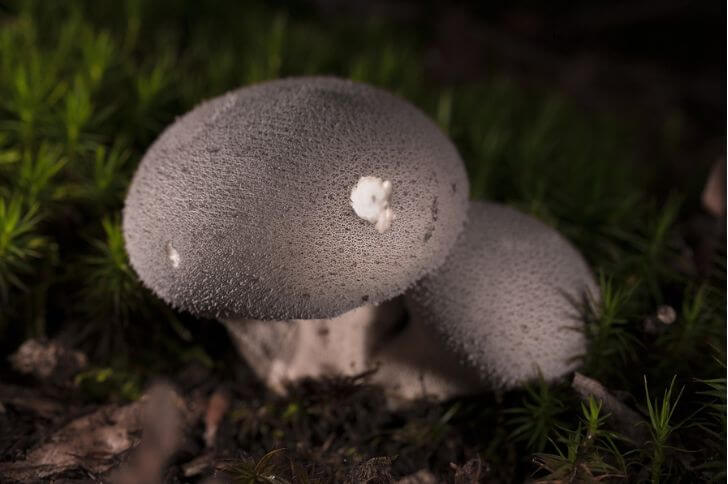
In our comprehensive list of white fungi, we looked at the common puffball. In this list, the umber-brown puffball, closely related to the common puffball, is what we’ll be taking a detailed look at.
Identification:
Like some North American puffballs, these mushrooms have an unusual shape; an upside down pear. The unmistakable pear, plush body can grow up to two inches wide. The exterior of the puffball mushroom is reddish-brown, while its interior is white when young and brown as it matures.
Another distinguishing feature of the umber-brown puffball mushroom is its lack of gills. Instead, this species releases spores through mature specimens splitting open along their sides when they are ready for reproduction.
Uses:
When harvesting this type of mushroom, make sure to choose only those which have not split open yet; if the spores have already been released, the mushroom will be too mature and bitter for use in cooking.
11. Sheathed Woodtuft Brown Mushrooms
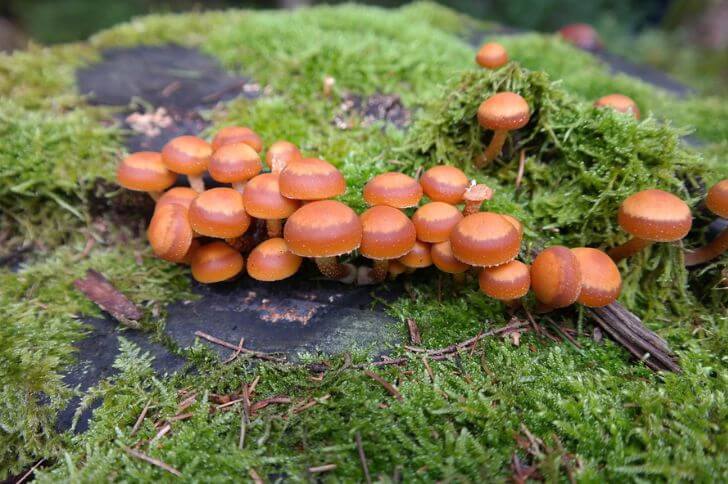
Now to a mushroom we recommend to only experienced foragers; the sheathed woodtuft.
Identification:
Also called the Kuehneromyces mutabilis, its cap is orange brown with smooth edges. On the underside the decurrent gills are cinnamon brown. Its stem may grow up to 4 inches in length and has a pleasant smell reminiscent of sweet almonds when broken open or cooked.
Uses:
They are found in clusters on stumps, typically on hardwood trees. Are sheathed woodtuft edible? Yes. However, because they look like the funeral bell mushroom, only experienced foragers should pick them.
Inedible Brown Fungi
12. Deadly Webcap
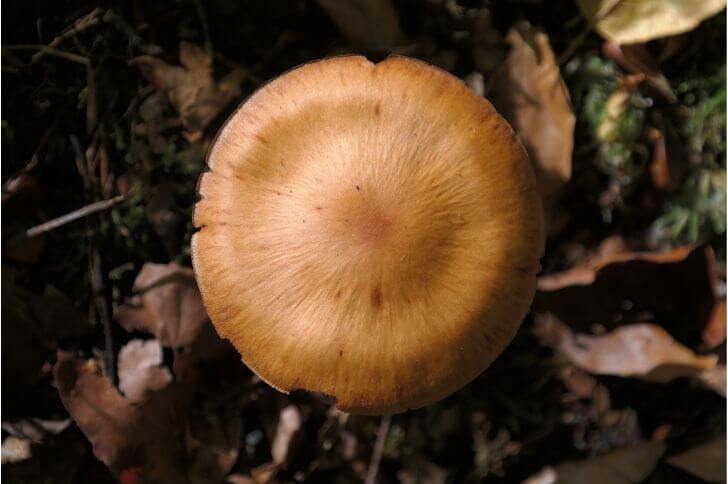
Deadly webcaps are a part of the gilled fungi family. These brown mushrooms are inedible, making identification important for any forager.
Identification:
Deadly webcap mushrooms are a type of fungi that have a distinctive, brown-hued cap with a similarly colored underside. Young webcaps have convex caps while older webcaps caps have a pointed center. Their gills are thick and well-spaced.
Next, check their stems. These webcaps have orange-brown stems with dark wavy markings. When cut in two, you’ll note the flesh is off white.
Uses:
As we stated, these gilled mushrooms are inedible. However, some mushroomers use them to make dyes for yarns.
13. Blackening Brittlegill
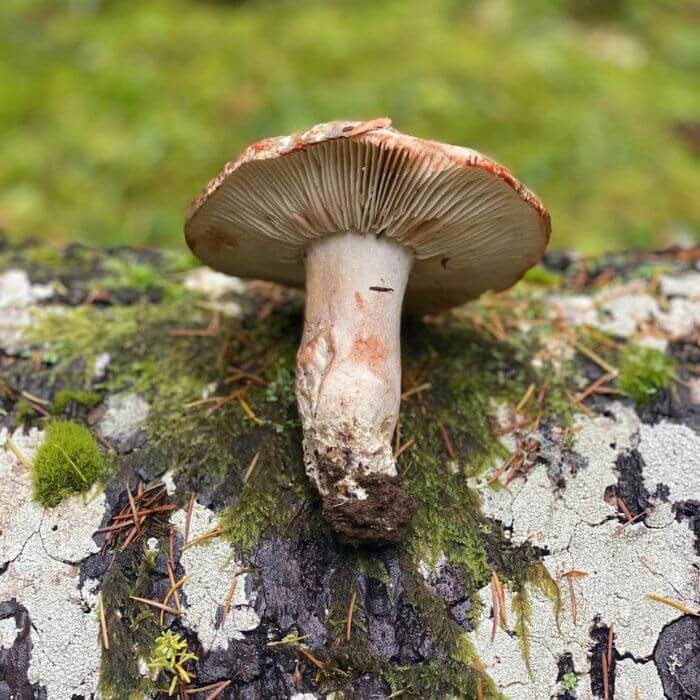
source:subviolaceus
Another summer to autumn fungus you should know about is the blackening brittlegill, also known as blackening russula.
Identification:
Brown brittlegill mushrooms are a type of edible mushroom that can be found in the wild. These mushrooms are easily identifiable by their distinct color, shape, and habitat. Blackening brittlegill grow in clusters of decaying matter.
Their caps are typically whitish on young fungi, quickly turning brownish and finally blackening. Also, the top starts out convex and flattens with a central depression. This brittlegill has whitish flesh that stains reddish when cut.
FAQs
White vs brown mushrooms
White mushrooms generally have a mild flavor with a tender texture. They can be eaten raw, cooked or sautéed, making them an excellent addition to salads or stir-fries. Brown mushrooms tend to have more intense flavors with firmer flesh, lending themselves better to roasting or grilling rather than eating raw.
Whether you’re looking for a subtle flavor boost or something more robust for your dish, both white and brown mushrooms can help you create delicious meals without sacrificing nutrition.
What is the brown fungus that explodes?
Umber-brown puffball has long been a source of fascination for mycologists and casual observers alike, due to its odd behavior when disturbed. When squeezed or stepped on, the puffball releases an impressive cloud of dust containing millions of tiny spores.
The origin and purpose of this strange ability remains unknown; however, some theories suggest that it serves as a method for dispersing spores across great distances so they can colonize new areas. Regardless of its purpose, one thing is certain: stepping on these mushrooms can be quite startling!
What are brown fungi?
Cremini are the most common edible brown fungi. They are common since you can find them in grocery stores and can be cultivated. Wild brown fungi include honey mushrooms, king boletes, fairy rings, and brown field mushrooms.
Final Thoughts:
In conclusion, brown mushrooms are a powerhouse of nutrition, flavor and versatility. They have been a part of traditional cooking throughout the world for centuries and they have been rediscovered by home cooks and restaurant chefs alike.
Source:
Hi There,
My name is Jenny. I’m the Chief Editor at Try Green Recipes and besides making yummy and healthy foods for my kids, grandkids, and friends. I’m new to the blogging world but I believe what I have to share is unique and will bring joy to your home. If you are adventurous and want try something tasty, let’s get started.

